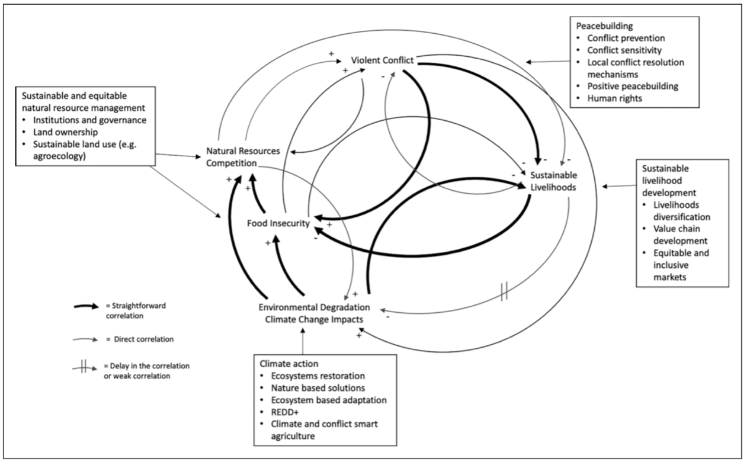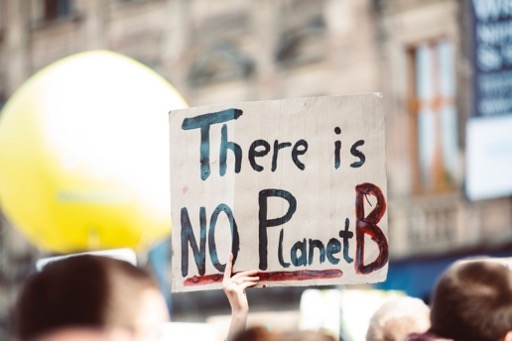While we all have begun to feel the effects of climate change in one way or another, populations in fragile and conflict-affected areas are especially vulnerable to its devastating impacts. This is because climate change acts as a threat multiplier of conflict. However, because of the incremental progression of climate change, it is rarely acknowledged as a direct driver of conflict in humanitarian peacebuilding efforts. Peacebuilders are often working independently of, if not counter to, environmental activists, when peacebuilders in fact have a vested interest in climate action. Yet, to date, there is a severe lack of integrated humanitarian efforts across these fields. Morales-Muñoz et al. (2022) recognized the potential of synergistic efforts and sought to work on a model that explores the co-benefits of collaboration between climate change mitigation and peacebuilding.

This figure demonstrates the vicious cycle of factors influencing climate change and violent conflict, highlighting entry points to enable joint climate action and peacebuilding (Morales-Muñoz, 2022).
Morales-Muñoz et al. (2022) found that previously separate interventions for climate action and peacebuilding can be coordinated to address climate security risks and to enhance related co-benefits that contribute to sustainable peace. Who doesn’t love a win-win outcome? They suggest that climate action and peacebuilding sectors can coordinate around:
- Conflict risk assessments,
- The management of land and water resources,
- Ecosystem restoration,
- Nature-based climate adaptation,
- Climate smart agriculture,
- Natural resources governance, and
- Sustainable market development.
In practice, this coordination can happen at all levels, from local communities to national/international organizations, as well as all phases of crisis prevention and recovery, from a crisis intervention to a society with sustainable peace. The benefits produced by more closely integrating the climate action and peacebuilding fields include livelihood creation, economic advancement, and community cohesiveness. The key to harnessing these benefits is proactive and intentional integration. Due to the complex nature of both climate action and peacebuilding, the use of Morales-Muñoz et al. (2022) systems approach brings a deeper understanding to the interconnectedness of these two areas. Looking toward each field when designing needs-based interventions can go a long way to building mutually beneficial, sustainable solutions.
Morales-Muñoz, H., Bailey, A., Löhr, K., Caroli, G., Villarino, Ma. E. J., LoboGuerrero, A. M., Bonatti, M., Siebert, S., & Castro-Nuñez, A. (2022). Co-Benefits Through Coordination of Climate Action and Peacebuilding: A System Dynamics Model. Journal of Peacebuilding & Development, 17(3), 304–323. https://doi.org/10.1177/15423166221132149
-- Deborah Sachare (she/her) is a research member of the MD-ICCCR’s Dynamical Conversations Lab at Columbia University. She has a background in environmental policy and conflict resolution.
